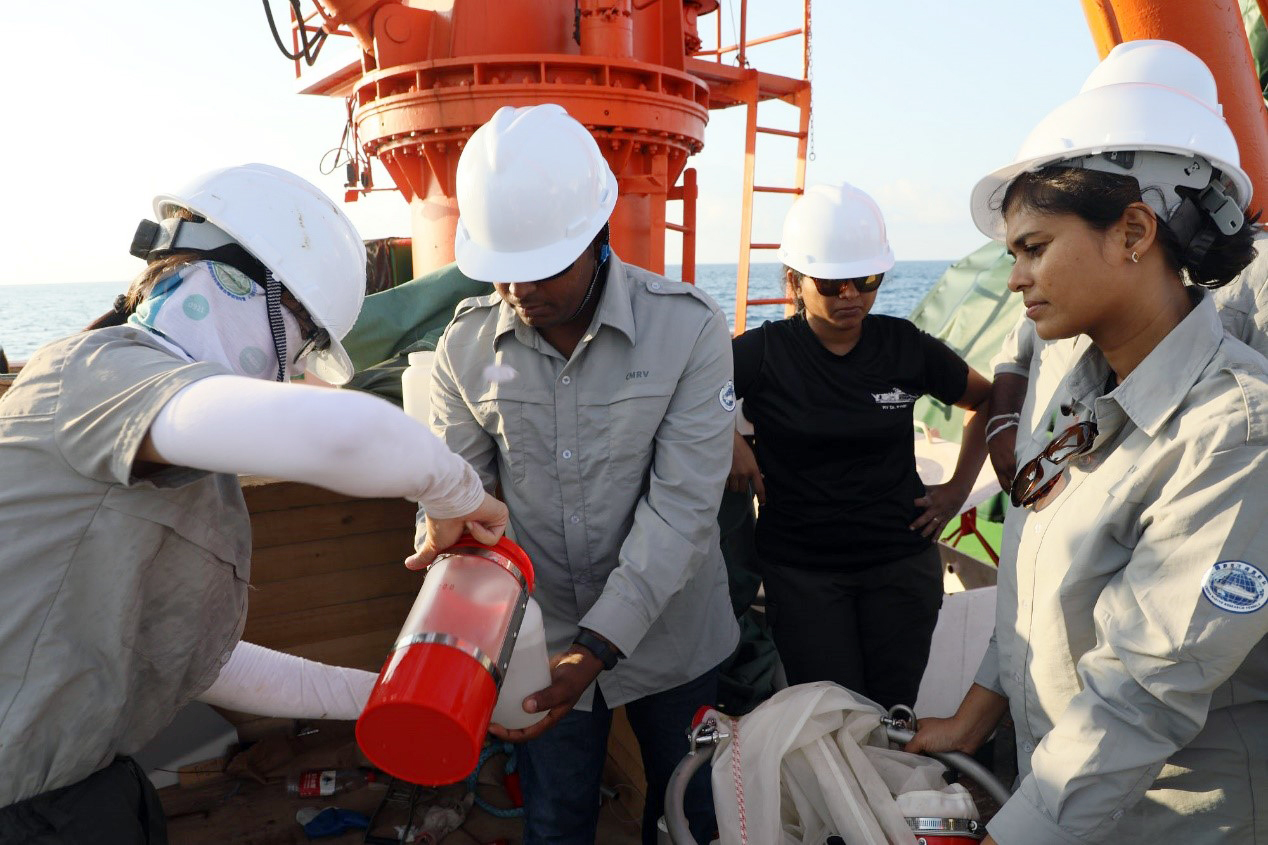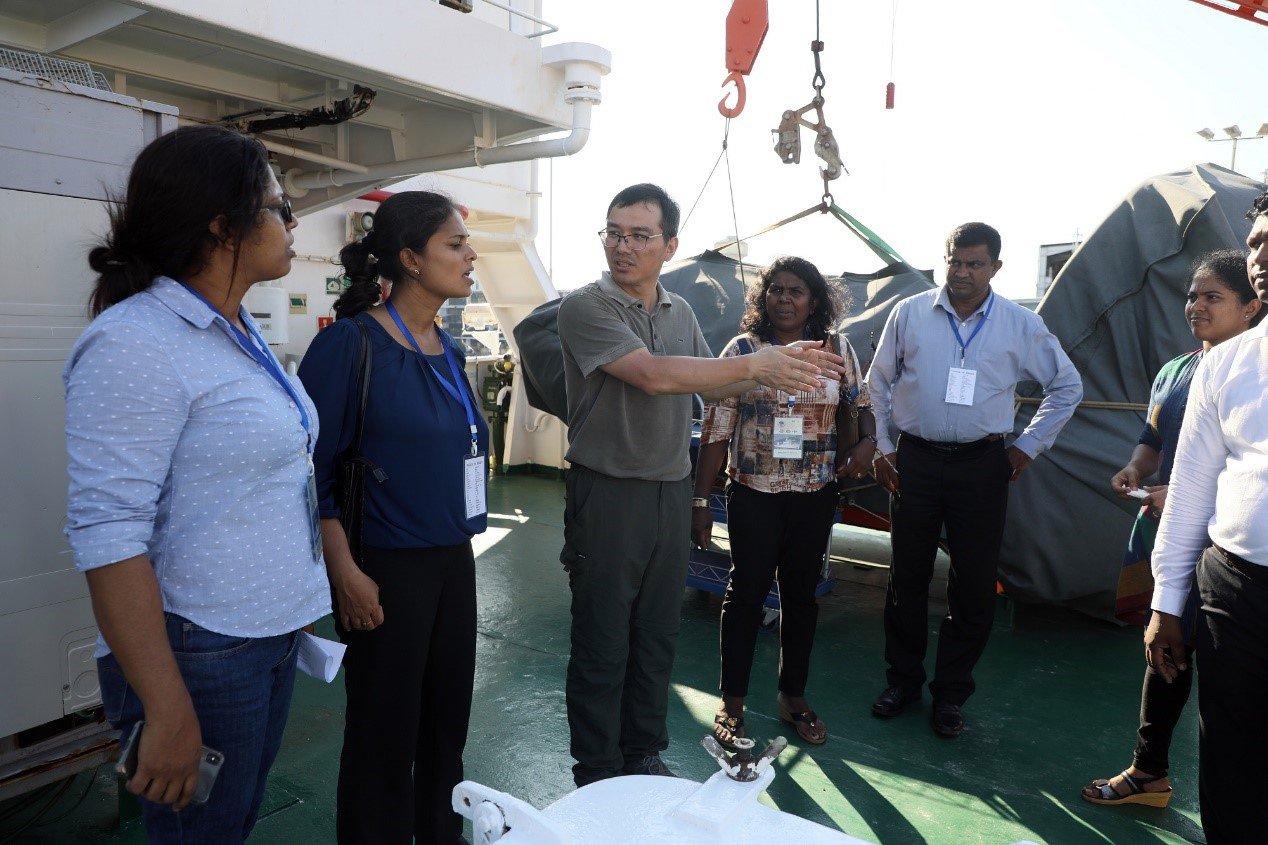News


On January 3, the first leg of marine scientific investigation mission was successfully completed for the “Equatorial East Indian Ocean and Bay of Bengal Marine and Ecological Studies (JAMES)” project hosted by SIO, and the “Xiangyanghong 06” docked at the Port of Colombo, Sri Lanka for personnel rotation and replenishment. On the same day, witnessed by Liu Dong, the counsellor of the Chinese Embassy in Sri Lanka, China and Sri Lanka launched the China-Sri Lanka Marine and Ecological International Cooperation Scientific Expedition Voyage (referred to as the “JAMES China-Sri Lanka International Cooperation Voyage”).
According to Researcher Zhou Feng, Chief Scientist of this voyage, the China-Sri Lanka International Cooperation Voyage is the second leg of the JAMES project and the first international cooperation voyage planned. It will be carried out in the exclusive economic zone in the south and east of Sri Lanka from January 5 to 17. Following the good wishes of “helping the Belt and Road Vision and cooperating in marine ecological research”, China-Sri Lanka International Cooperation Voyage invited a total of 7 Sri Lankan scientists from the Sri Lankan National Aquatic Resources Research and Development Agency (NARA), University of Ruhuna, a well-known local university; China-Sri Lanka International Cooperation Voyage plans to complete a comprehensive survey of hydrological, biological, chemical, meteorological and optical elements and water depth at a total of 33 stations. In addition to traditional CTD, ADCP, etc., the domestically developed Argo buoy, surface drifting multi-parameter buoy, multi-parameter chemical profiler, etc. were also carried in this voyage, and the obtained data and samples will be shared by China and Sri Lanka.
Sri Lanka is an island country in the Indian Ocean, and its marine environment and domestic climate are strongly affected by the monsoon. Affected by global warming and increasing human activities, Sri Lanka is also threatened by environmental and ecological disasters such as sea-level rise, tsunami, tropical cyclone, inshore eutrophication and marine dysoxia. Chinese and Sri Lankan scientists share a common scientific interest in the monsoon and marine dysoxia. Through the full-depth and multi-element ocean observations of this leg of voyage, they will further understand the range and extent of dysoxia in the Northeast Indian Ocean and the Bay of Bengal, and focus on ocean response to the winter monsoon and other hot scientific issues.



